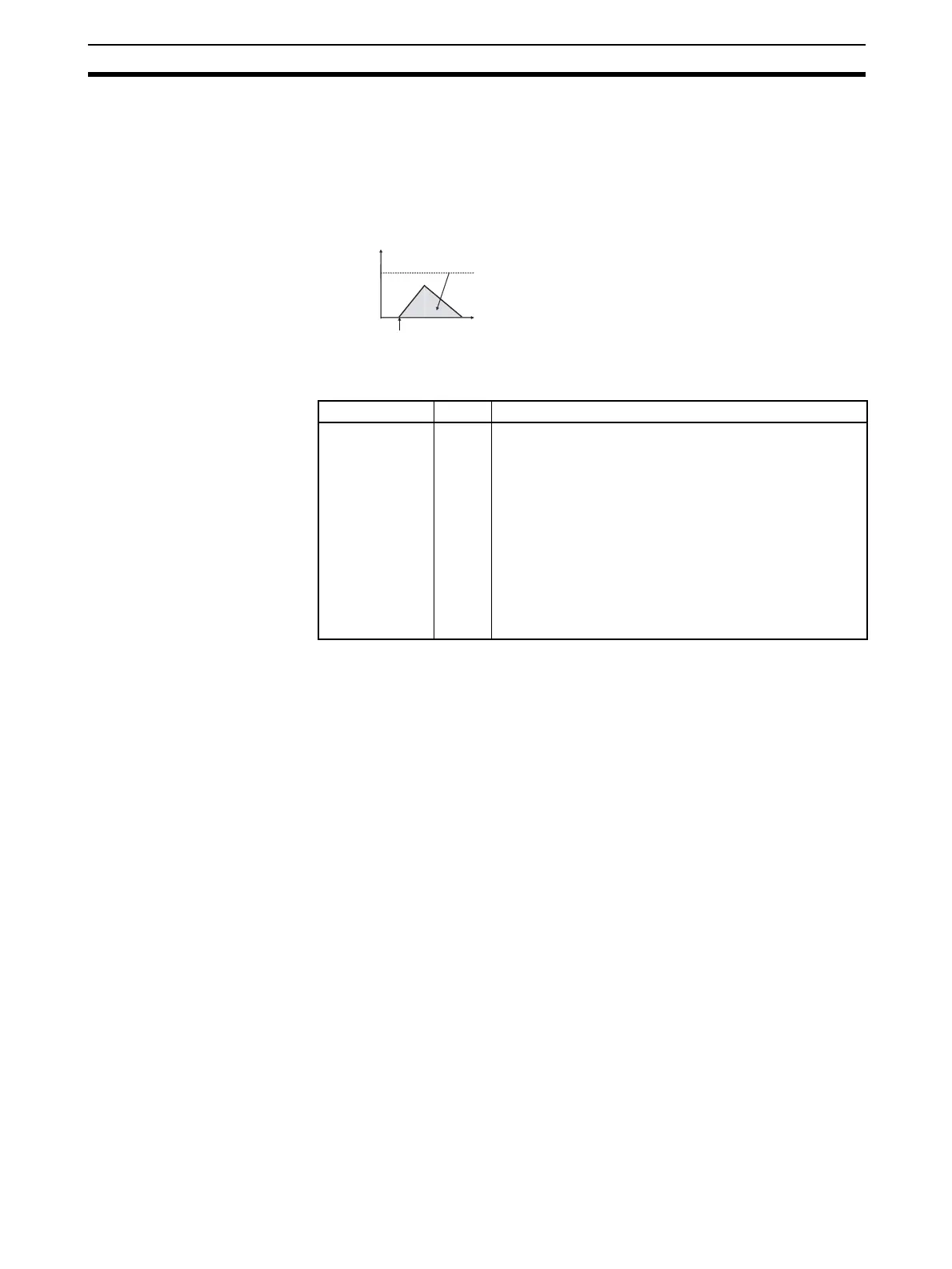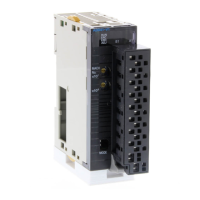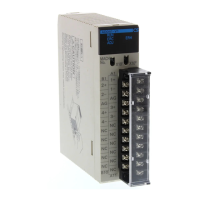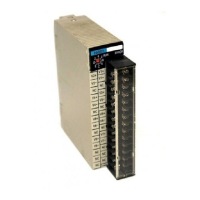115
ACCELERATION CONTROL: ACC(888) Section 5-8
Note Triangular Control
If the specified number of pulses is less than the number required to reach the
target frequency and return to zero, the function will automatically reduce the
acceleration/deceleration time and perform triangular control (acceleration
and deceleration only.) An error will not occur.
Flags
Example When CIO 000000 turns ON in the following programming example,
ACC(888) starts pulse output from pulse output 0 in continuous mode in the
clockwise direction using the CW/CCW method. Pulse output is accelerated
at a rate of 20 Hz every 4 ms until the target frequency of 500 Hz is reached.
When CIO 000001 turns ON, ACC(888) changes to an acceleration rate of
10 Hz every 4 ms until the target frequency of 1,000 Hz is reached.
Pulse frequency
Target
frequency
Specified number
of pulses
(Specified with
PLS2(887).)
Execution of
PLS2(887)
Time
Name Label Operation
Error Flag ER ON if the specified range for P, M, or S is exceeded.
ON if pulses are being output using ORG(889) for the
specified port.
ON if ACC(888) is executed to switch between indepen-
dent and continuous mode for a port that is outputting
pulses for SPED(885), ACC(888), or PLS2(887).
ON if ACC(888) is executed in an interrupt task when an
instruction controlling pulse output is being executed in a
cyclic task.
ON if ACC(888) is executed for an absolute pulse output
in independent mode but the origin has not been estab-
lished.
